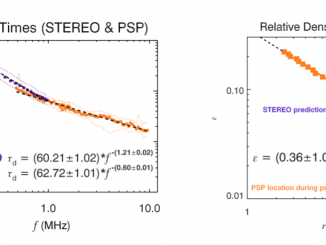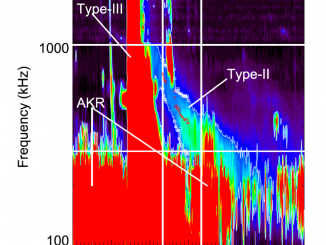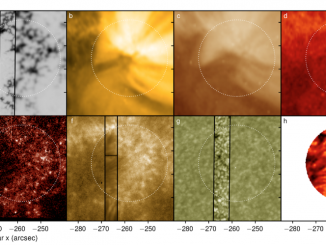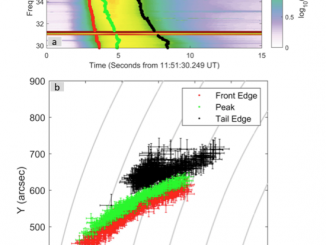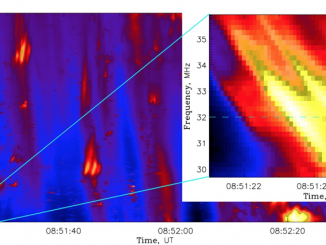Density Fluctuations in the Solar Wind Based on Type III Radio Bursts Observed by Parker Solar Probe
by V. Krupar et al.*
Type III bursts belong among the strongest radio signals routinely observed by both space-borne and ground-based instrumentations. They are generated via the plasma emission mechanism, when beams of suprathermal electrons interact with the ambient plasma triggering radio emissions at the plasma frequency (the fundamental emission) or at its second harmonic (the harmonic emission). As the electron beams propagate outward from the Sun, radio emissions are generated at progressively lower frequencies […]

